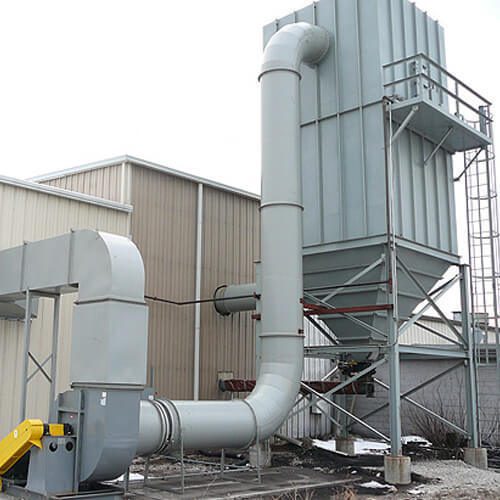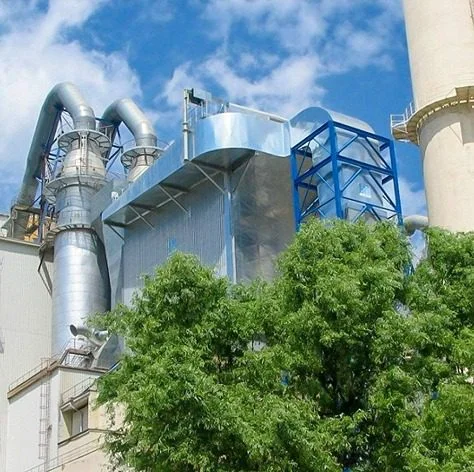النجارة حرفةٌ تُضفي على الإبداع حيويةً، لكنها تُولّد أيضًا كميةً كبيرةً من الغبار والجسيمات العالقة في الهواء. سواءً كنت تُدير منشأةً تجاريةً كبيرةً للنجارة أو تُمارس النجارة كهوايةٍ شخصية، فإن جودة الهواء عاملٌ بالغ الأهمية لا يُمكن تجاهله. يُمكن أن يُصبح الغبار الناعم الناتج عن نشر الخشب وصنفرته وتشكيله خطرًا صحيًا جسيمًا إذا لم تتم إدارته بشكل صحيح. لذلك، يُعدّ نظام تنقية هواء النجارة المتين أمرًا أساسيًا لضمان سلامة العمال، والحفاظ على عمر المعدات، وتحسين جودة الهواء بشكل عام في مكان العمل.
تُعدّ جزيئات غبار الخشب الدقيقة خطيرةً بشكل خاص لأنها قد تبقى عالقةً في الهواء لفترات طويلة، مما يُسهّل استنشاقها. مع مرور الوقت، قد يُؤدي التعرض لغبار الخشب إلى مشاكل في الجهاز التنفسي، وتهيج الجلد، ومشاكل في العين، وحتى أمراض مزمنة مثل الربو أو السرطان. تُنتج أنواع الخشب المختلفة مخاطر غبار مُختلفة - فبعض الأخشاب الصلبة الغريبة، على سبيل المثال، أكثر سُمّية من غيرها. وبغض النظر عن نوع المادة، يجب أن تكون إدارة الغبار بفعالية من خلال نظام ترشيح هواء احترافي أولويةً قصوى في أي بيئة نجارة.
لماذا يعد التحكم في الغبار أمرًا مهمًا في بيئات النجارة
لا تقتصر مخاطر غبار الخشب على الصحة فحسب، بل قد يُسبب تراكمه أيضًا خطر نشوب حرائق وانفجارات، خاصةً في الأماكن المغلقة محدودة التهوية. حتى طبقة رقيقة من الغبار على الأسطح قد تشتعل في ظل الظروف المناسبة، مما يُشكل تهديدًا كبيرًا لسلامة العمال وسلامة المنشأة. إضافةً إلى ذلك، قد يُؤثر الغبار الزائد على دقة أدوات النجارة، ويُتلف الآلات، ويُؤدي إلى توقف مُكلف بسبب مشاكل الصيانة. لا يقتصر الهواء النقي على الصحة فحسب، بل يشمل أيضًا الكفاءة التشغيلية والحفاظ على جودة الصنعة.
يساعد نظام ترشيح الهواء في أعمال النجارة على التقاط الغبار العالق في الهواء من المصدر وإزالة الجزيئات العالقة من البيئة. هذا يؤدي إلى بيئة عمل أنظف وأكثر صحة، وجودة منتجات أفضل، وتقليل مخاطر التشغيل على المدى الطويل. إن تطبيق حلول ترشيح هواء فعّالة ليس مجرد إجراء تنظيمي، بل هو استثمار في صحة القوى العاملة واستدامة العمل.
الميزات الرئيسية التي يجب البحث عنها في نظام تنقية الهواء للنجارة
- مرشحات عالية الكفاءة: تعتبر المرشحات القادرة على حبس الجسيمات الصغيرة التي يصل حجمها إلى 0.3 ميكرون مثالية لمتاجر النجارة.
- مراحل الترشيح المتعددة: الأنظمة التي تجمع بين المرشحات المسبقة، مرشحات الهواء عالية الكفاءةوتوفر المرشحات الكربونية حماية متعددة الطبقات.
- التشغيل الهادئ: مهم بشكل خاص للحفاظ على بيئة عمل مريحة ومنتجة.
- صيانة سهلة: تعتبر الأنظمة المصممة لتغيير الفلتر بسرعة وتقليل وقت التوقف إلى الحد الأدنى أكثر سهولة في الاستخدام.
- قابلية التوسع: القدرة على إضافة وحدات أو توسيع الأنظمة حسب نمو احتياجات الورشة.
- كفاءة الطاقة: إن الأنظمة التي تحقق التوازن بين قوة تدفق الهواء وانخفاض استهلاك الطاقة تكون فعالة من حيث التكلفة بمرور الوقت.
اكتشف مجموعة الحلول لدينا:
اختيار نظام تنقية الهواء المناسب لتطبيقات النجارة
يبدأ اختيار النظام المناسب بتقييم مساحة العمل، ونوع أعمال النجارة المُنجزة، وكمية الغبار المُنتج. قد تستفيد الورش الصغيرة من وحدات تنقية الهواء المحمولة التي يُمكن وضعها بشكل استراتيجي حول المناطق كثيفة الغبار، بينما تتطلب المنشآت التجارية الأكبر عادةً أنظمة مركزية لجمع الغبار وتنظيف الهواء. ومن الاعتبارات المهمة الأخرى معدل تبادل الهواء - أي عدد مرات ترشيح الهواء في الساعة - والذي يجب أن يتناسب مع كثافة العمليات.
إلى جانب مواصفات الأجهزة، تُعد سهولة التركيب، ومستويات الضوضاء التشغيلية، ودعم ما بعد البيع عوامل بالغة الأهمية. فالنظام الذي يصدر ضوضاء عالية قد يُعطل سير العمل ويُسبب إزعاجًا للعاملين، بينما قد يؤدي ضعف إمكانية الوصول إلى خدمات الصيانة إلى زيادة تكاليف التشغيل. إن تخصيص إعدادات الترشيح لتلبية احتياجات محددة، مثل عمليات الصنفرة الثقيلة أو استخدام التشطيبات الكيميائية، يُحسّن بشكل كبير من أداء النظام وسلامة مكان العمل.
كيف يُحسّن ترشيح الهواء المناسب جودة أعمال النجارة
لا تقتصر فوائد ترشيح الهواء الجيد على حماية الصحة فحسب، بل يلعب دورًا حيويًا في تحسين جودة مشاريع النجارة. قد تؤثر جزيئات الغبار المتراكمة على أسطح الخشب غير المكتملة على عمليات التلوين أو الطلاء أو التشطيب، مما يؤدي إلى عيوب وعدم تناسق في العمل. في المشاريع عالية التفاصيل، مثل صناعة الخزائن أو الآلات الموسيقية، حتى أصغر العيوب الناتجة عن الغبار المحمول جوًا قد تكون غير مقبولة.
علاوة على ذلك، يُحسّن الهواء النظيف الرؤية ويُحسّن بيئة العمل. فعندما لا يُشتّت انتباه الحرفيين بسحب الغبار أو القلق بشأن استنشاق الجزيئات الضارة، يُمكنهم التركيز بشكل أكبر على عملهم، مما يُؤدي إلى إتقان حرفي ورضا أكبر. وفي نهاية المطاف، يُعزز نظام تنقية الهواء عالي الأداء في النجارة البراعة والدقة والجمال التي تُميّز جودة النجارة.
مستقبل تنقية الهواء في ورش النجارة
مع تبني الصناعات للتقنيات الذكية، تزداد أنظمة تنقية الهواء المستخدمة في أعمال النجارة تطورًا. ويتجه المستقبل نحو مراقبة جودة الهواء آليًا، ووحدات تنقية مُحسّنة الطاقة، وتنبيهات صيانة مُدعّمة بتقنيات إنترنت الأشياء. وتُصمّم الأنظمة بمواد مستدامة وتركيبات معيارية، مما يسمح للشركات بتكييف بنيتها التحتية لتنقية الهواء وتوسيع نطاقها حسب الحاجة دون الحاجة إلى إصلاحات جذرية.
علاوةً على ذلك، يُشجع الوعي المتزايد بمعايير الصحة في مكان العمل واللوائح البيئية شركات النجارة على الترقية إلى حلول تنقية هواء أنظف وأكثر مراعاةً للبيئة. الاستثمار في نظام تنقية هواء مُتطور لا يضمن امتثال ورشتك للمعايير فحسب، بل يضمن أيضًا توفيرًا في التكاليف على المدى الطويل، وتحسين صحة العمال، وتعزيز سمعة العلامة التجارية.







